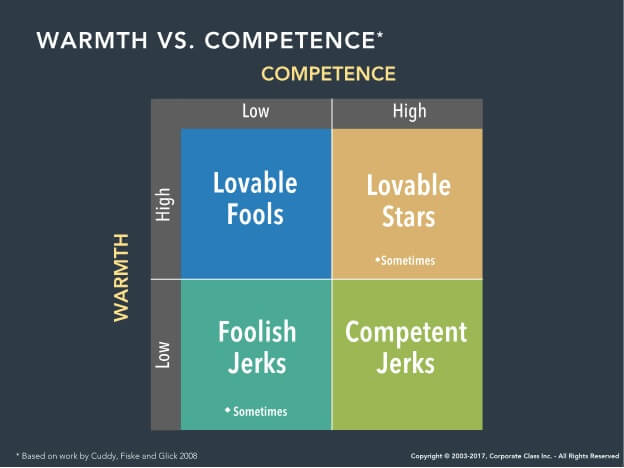People don’t intuitively master the ability to connect, to network, to manage difficult or awkward conversations, and to make great presentations. All are learned skills.
At Corporate Class, we train business professionals to develop and refine their communications skills. The ability to forge alliances, to bring people on board, to enlist others in the shared vision that moves things forward are fundamental to successful communications.
Three Communication Skills Courses taking place in our Toronto Boardroom
Course 1: How to Command and Work a Room
Developing the skills to face a room of people you barely know or have never met, with self-assurance, seemingly effortless conversation and to make meaningful connections is the focus of this Course. The centerpiece of our training is developing the presence, self-assurance, and confidence to make the most of business networking events. The expression work-a-room is something of misnomer because it really refers to friendly interaction with fellow-attendees at an event.
What’s required to step up, and step out at networking events?
Even seasoned professionals often feel intimidated when facing a room of new people. Our training recognizes the significance of overcoming this social anxiety and empowers participants with new methods of communicating.
We train people to develop precise techniques that seamlessly build connections and lead to establishing relationships, regardless of the event or venue. The goal is to be sufficiently experienced with these ever-present interactions to achieve a comfort level – and the ease, grace, and poise – to speak to anyone, on any occasion. In addition, this newly activated skillset provides participants with a significant competitive edge. Cost $225.00
Course 2: Conversations that matter
Business professionals understand that to positively influence an outcome, every window of opportunity counts; every conversation matters.
Often, delicate conversations that are not carefully managed, may lead to incorrect decisions and disappointing outcomes. During this Course, we review and assess active listening behaviors and examine examples of conversations that broke down and became uncontrollable. We compare these failed endeavors to how an improved outcome could have been achieved.
Participants practice a series of procedures to maintain a balanced mindset in potentially challenging situations, and discover how to analyze and transform behavior to improve chances for optimum results. Cost $225.00
Course 3: Presentation Skills: On Stage Presence
Today, the skill to present, persuade and convince – to speak with impact – upstages even the best products or ideas. This presentation skills Course trains participants to make compelling, engaging presentations.
Technique is key to overcoming speaking anxiety. When people are confident about their material, have systematically organized it, and rehearsed in a disciplined manner, they communicate ideas effectively. We introduce a model for participants to create a framework that guides them through fine-tuning and honing presentations.
This Course is designed to show participants how to demonstrate high-quality communication skills when speaking more formally – making speeches, presentations or pitches. Cost $225.00
Toronto Courses in our Boardroom
We are in the process of finalizing our Fall 2017 dates. If you would like to receive information about these Course dates, please contact us:
michelle@corporateclassinc.com
416-967-1221 Ext 107






 Executive Presence – what is it? Well, it’s neither exclusive nor elusive, which means you can get it! People aren’t “born” with Executive Presence. Yes, for some it comes more naturally because they inheritably express certain characterizes that are closely linked to Executive Presence. However, for those who do not exhibit these characteristics, there is no need to fret. Executive Presence can absolutely be learned, although it is important to keep in mind that it is a process, not an event.
Executive Presence – what is it? Well, it’s neither exclusive nor elusive, which means you can get it! People aren’t “born” with Executive Presence. Yes, for some it comes more naturally because they inheritably express certain characterizes that are closely linked to Executive Presence. However, for those who do not exhibit these characteristics, there is no need to fret. Executive Presence can absolutely be learned, although it is important to keep in mind that it is a process, not an event. 
 Starting your career in your chosen field is certainly an exciting time in your life. As your career begins to take off and flourish, there are certain activities and behaviours you can engage in to make the transition into work like more successful and fulfilling. One of these activities is often dreaded and feared by most, let alone young professionals who have little to no practice engaging in it: networking.
Starting your career in your chosen field is certainly an exciting time in your life. As your career begins to take off and flourish, there are certain activities and behaviours you can engage in to make the transition into work like more successful and fulfilling. One of these activities is often dreaded and feared by most, let alone young professionals who have little to no practice engaging in it: networking. We hope you enjoyed our
We hope you enjoyed our 